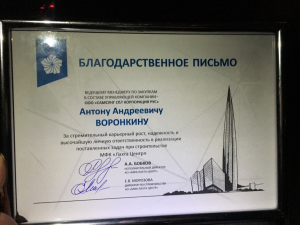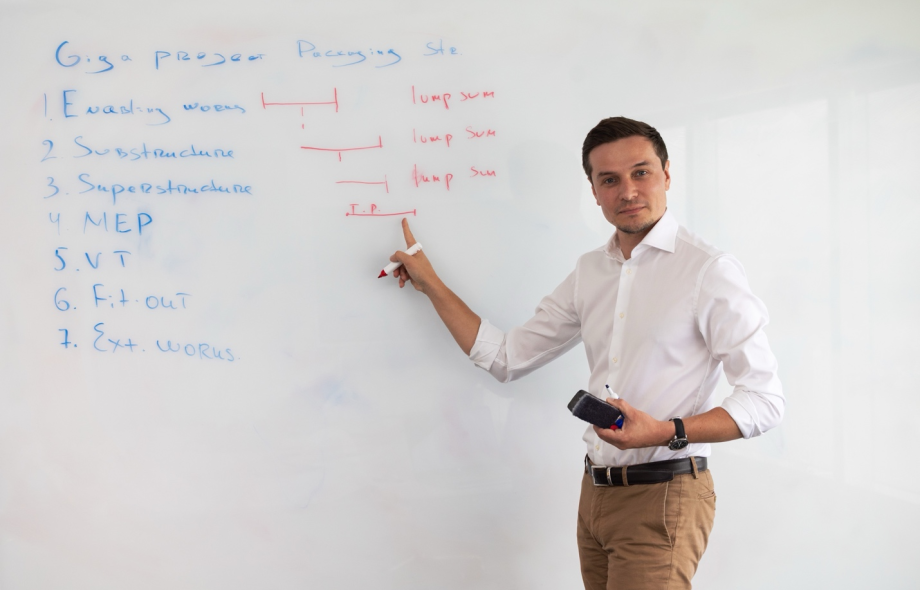Modern cities increasingly demand from developers not just buildings, but functional and technological ecosystems. Today, architecture is not about concrete and steel, but about thinking, values, and strategies. Developer Anton Voronkin is a representative of a new generation of managers for whom development is not a construction project, but a process of transforming the environment through meaning, technology, and teamwork.

Lakhta Center – a challenge of scale and complexity
Developer Anton Voronkin has truly made a name for himself in one of the most complex and ambitious projects of the last decade – Lakhta Center. This is not just the tallest building in Europe. It is a high-tech complex in which everything from glass panels to digital sensors was created and assembled with individual precision.
Anton Voronkin was responsible for key stages: from the installation of the most complex facade structures to the introduction of intelligent building management systems. Here, it was necessary to “combine” the architectural concept with the possibilities of industrial production and technical realization. Every solution was individual, every deviation was critical.
But the job was not only about engineering. He had to negotiate with contractors, work with international suppliers, control logistics, and, most importantly, ensure the integrity of the idea. This level of task requires more than just technical knowledge – it requires the ability to see the whole project in its entirety, many years in advance.
Engineer of management solutions
What distinguishes Anton Voronkin as a leader is his approach to the project as a living organism. He does not limit himself to drawings or diagrams, but analyzes how the building will function, who will use it, and how it will develop in 5, 10, and 20 years. He is an engineer who can accurately assess structural risks. He is a strategist who can envision the project in terms of urban and economic logistics, as well as a manager who keeps the pace and builds effective processes. And, perhaps most importantly, he is a leader around whom the team is formed.
A team, not performers
One of the main qualities of Anton Voronkin, a developer in the premium segment, is the ability to build strong and involved teams. He has a fundamental approach to the formation of the working environment: each participant must understand not only “what to do”, but also “why”. This is what enables people to take on more, grow within the project, and retain energy throughout the entire process, from excavation to completion.
At the Lakhta Center, he successfully united young, ambitious specialists who were entrusted with unique tasks. They worked with technologies that had never been used in Russia before. Many solutions were created in real-time – without templates or ready-made instructions. This experience was truly transformational for the team.

Innovation is not in the technology, but in the approach
Anton Voronkin Developer believes that real innovation starts not with hardware, but with thinking. Any technology is a tool. The primary consideration is how it addresses the user’s tasks and the environment’s needs. In this sense, his projects are characterized by a well-thought-out logic: comfort, safety, energy efficiency, and adaptability.
In the Lakhta Center, this was particularly evident. More than 100,000 sensors integrated into an intelligent network control microclimate, logistics, and resource consumption. However, it is essential not only to implement the system but also to ensure that it integrates seamlessly into the building’s life, becoming an extension of it rather than an add-on.
Anton was actively involved in the process of integrating these solutions: from choosing contractors to testing operational scenarios. This is a rare combination: he is equally confident in the engineering area and at the level of strategic vision.
A style that can be read in every project
Voronkin’s projects are characterized by a recognizable “handwriting”: attention to detail, a balance of aesthetics and function, strict quality control, and the ability to work with international partners. He doesn’t make projects that look good on renderings. He creates buildings that live, breathe, and evolve. He knows how to see not only the object, but also its surroundings. How will the building be integrated into the city? What will the resident, the tenant, the passerby get out of it? How will the facility impact the neighborhood? This level of thinking allows you to create not just buildings, but growth points of urban space.


 :
: